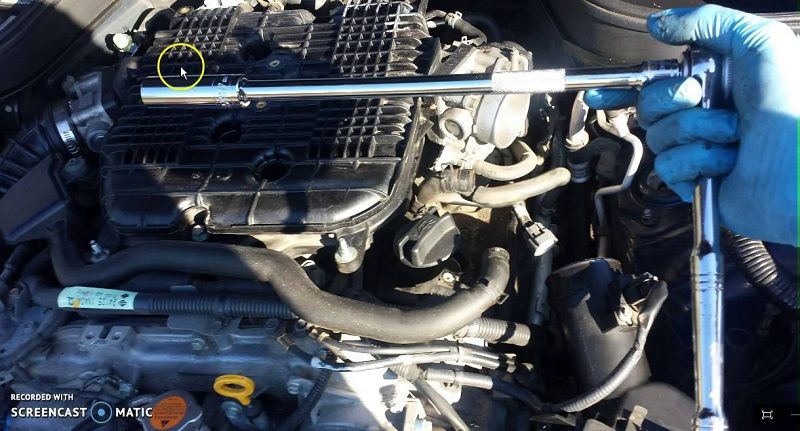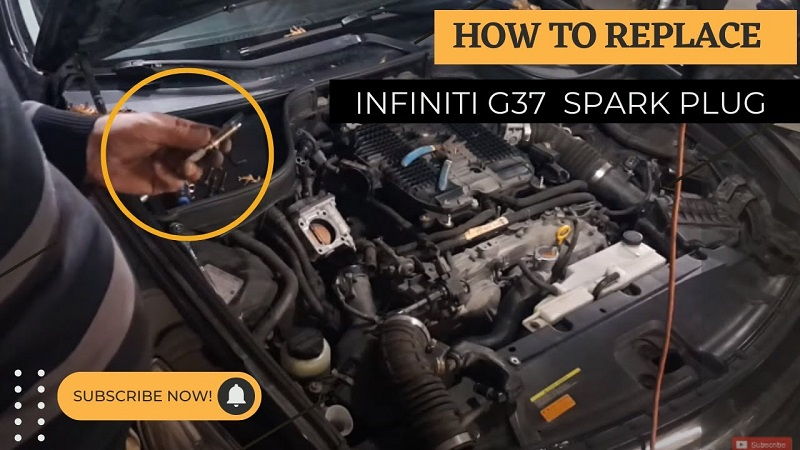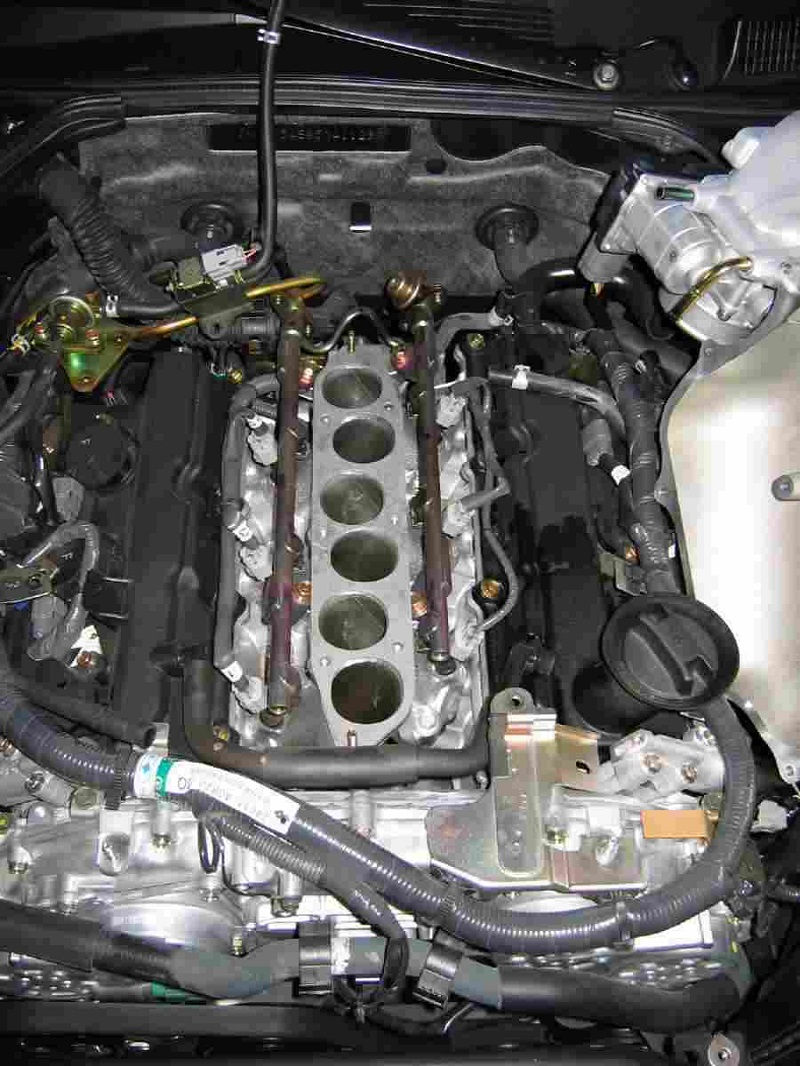This post contains affiliate links. This means I will make a commission at no extra cost to you should you click through and make a purchase [ “As an Amazon Associate, I earn from qualifying purchases.” ]. Read the full disclosure here.
G37 Spark Plug Replacement GuideMechanic.Com Keeping your Infiniti G37 running smoothly and efficiently requires regular maintenance, including spark plug replacement.
Spark plugs play a crucial role in the ignition system, providing the necessary spark to ignite the air-fuel mixture in the engine cylinders.
Over time, spark plugs wear out and can cause a range of issues, from decreased fuel efficiency to engine misfires.
In this detailed guide, we will walk you through the process of replacing the spark plugs in your G37, ensuring your vehicle’s optimal performance and longevity.
See Also: Spark Plug Replacement Cost
From understanding the signs of worn-out spark plugs to step-by-step instructions for replacement, we’ve got you covered.
Signs that your G37 spark plugs need replacement

Before diving into the replacement process, it’s important to recognize the signs that your spark plugs need attention.
Neglecting worn-out spark plugs can lead to decreased engine performance, reduced fuel efficiency, and potential engine damage.
By understanding the symptoms, you can address the issue promptly and restore your G37’s performance.
Rough idling
If your G37 starts to experience rough idling, where the engine feels unstable or vibrates excessively at idle, it could be a sign of worn-out spark plugs.
As the spark plugs deteriorate, they may struggle to ignite the air-fuel mixture consistently, resulting in an irregular engine idle.
Decreased acceleration
Are you noticing a decrease in your G37’s acceleration? Worn-out spark plugs can hinder the combustion process, leading to reduced power and slower acceleration. If you find that your vehicle is not as responsive as it used to be, it may be time to replace the spark plugs.
Increased fuel consumption
A sudden increase in fuel consumption without any discernible changes in driving habits or conditions can indicate faulty spark plugs.
When spark plugs wear out, they struggle to effectively ignite the air-fuel mixture, causing incomplete combustion and higher fuel consumption.
Engine misfires
One of the most noticeable signs of worn-out spark plugs is engine misfires. Misfires occur when the spark plugs fail to ignite the air-fuel mixture properly, resulting in a momentary loss of power or a noticeable stuttering sensation.
See Also: 2010 Toyota Corolla Spark Plugs: Step-by-Step Guide to Changing
If you experience engine misfires, it’s crucial to address the issue promptly to prevent further damage to the engine.
Gathering the necessary tools and materials

Before you start the spark plug replacement process, it’s essential to gather all the required tools and materials. Having everything on hand will make the process smoother and more efficient. Here’s a comprehensive list of items you’ll need:
Spark plugs
Make sure to purchase the correct spark plugs for your G37 model. Refer to your vehicle’s owner manual or consult an authorized dealer to determine the right spark plug specifications. Choosing the right spark plugs is crucial for optimal engine performance.
Spark plug socket wrench
A spark plug socket wrench is a specialized tool designed for removing and installing spark plugs. It has a rubber insert to securely hold the spark plug during the process. Make sure to get a socket wrench that fits your spark plugs’ size.
Torque wrench
A torque wrench is essential for tightening the spark plugs to the manufacturer’s specifications. Over-tightening or under-tightening the spark plugs can lead to problems, so using a torque wrench ensures proper installation.
Dielectric grease
Dielectric grease helps to prevent moisture and corrosion from affecting the spark plug connections. It’s crucial to apply a thin layer of dielectric grease to the spark plug boots before reassembling them.
Anti-seize compound (optional)
An anti-seize compound can be used to coat the spark plug threads before installation. This compound prevents the spark plugs from seizing or getting stuck in the cylinder head, making future removal easier.
Preparing your G37 for spark plug replacement

Proper preparation is key to a successful spark plug replacement. By following these steps, you’ll ensure a smoother process and reduce the risk of damaging any components:
Disconnect the battery
Start by disconnecting the negative terminal of the battery to prevent any electrical mishaps during the replacement process. Simply loosen the negative terminal’s clamp using a wrench and carefully remove it from the battery post.
Access the spark plug coils
Locate the spark plug coils on top of the engine. Depending on your G37 model, you may need to remove some plastic covers or air intake components to access the coils. Take your time and pay attention to any connections or clips that need to be detached.
Safely remove the old spark plugs
Before removing the old spark plugs, use a compressed air blower or a soft brush to clean the area surrounding the spark plug wells.
See Also: 2015 Honda Civic Spark Plugs: DIY Spark Plug Replacement
This prevents debris from falling into the cylinders when you remove the plugs. Then, carefully disconnect the spark plug coils and use the spark plug socket wrench to loosen and remove the old spark plugs one by one.
Removing the old spark plugs
Now that you have prepared your G37 for spark plug replacement, it’s time to remove the old spark plugs. Follow these step-by-step instructions to ensure a successful removal process:
1. Remove one spark plug at a time
To avoid confusion and prevent mix-ups, it’s essential to remove and replace the spark plugs one at a time.
Start by selecting a spark plug, then use the spark plug socket wrench to loosen and unscrew it counterclockwise. Be careful not to apply excessive force, as you don’t want to damage the spark plug or the cylinder head threads.
2. Inspect the removed spark plug
After removing each spark plug, take a moment to inspect its condition. This visual assessment can provide valuable insights into your G37’s engine health.
Look for signs of fouling, such as excessive carbon deposits or oil residue, as these can indicate underlying issues that need to be addressed.
3. Interpret the condition of the old spark plugs
The condition of the removed spark plugs can reveal valuable information about your engine’s performance. Here are some common scenarios and what they might indicate:
Normal wear
If the spark plug’s electrode appears clean and the ceramic insulator is intact, it indicates normal wear. However, even in this case, it’s still recommended to replace the spark plug to maintain optimal performance.
Fouling
Excessive carbon deposits or oil residue on the spark plug can indicate fouling. Carbon fouling may occur due to prolonged idling or running rich fuel mixtures, while oil fouling might be a symptom of worn piston rings or valve stem seals. Addressing these issues is crucial to prevent further engine damage.
Wear and erosion
If the spark plug’s electrode appears worn down or eroded, it’s a sign that the spark plug has reached the end of its service life. Replace the spark plug promptly to avoid misfires, decreased performance, and potential engine damage.
Preparing the new spark plugs
Before installing the new spark plugs, it’s crucial to prepare them properly. Follow these steps to ensure optimal performance and longevity:
Apply dielectric grease
Using a small brush or your finger, apply a thin layer of dielectric grease to the inside of the spark plug boots.
This grease helps to protect the electrical connections from moisture and corrosion, ensuring reliable spark plug performance.
Gap the spark plugs
Spark plug gaps vary depending on the vehicle and engine specifications. Refer to your G37’s owner manual or consult an authorized dealer to determine the correct spark plug gap.
Use a spark plug gap tool to adjust the gap accordingly, gently bending the ground electrode to achieve the desired measurement.
Clean the spark plugs
Before installing the new spark plugs, ensure they are clean and free from any debris or contaminants. Use a wire brush to carefully clean the threads and electrode, making sure not to damage the delicate components. A clean spark plug ensures a reliable connection and efficient combustion.
Installing the new spark plugs
Now that you have prepared the new spark plugs, it’s time to install them in your G37. Follow these step-by-step instructions for a successful installation:
1. Start threading the spark plug
Insert the new spark plug into the spark plug socket wrench, making sure it is properly seated. Carefully lower the spark plug into the spark plug well and begin threading it by hand. Be cautious not to cross-thread the spark plug, as it can damage the cylinder head threads.
2. Tighten the spark plug
Once the spark plug is threaded correctly, use the spark plug socket wrench to tighten it. Start by hand-tightening the spark plug until it is snug, and then use the torque wrench to reach the manufacturer’s recommended torque specification.
Over-tightening or under-tightening the spark plugs can lead to issues, so ensure you follow the specified torque values.
3. Repeat for all spark plugs
Continue the same process for each spark plug in your G37. Remember to take your time and ensure that each spark plug is properly seated and tightened to the correct torque specification.
Working systematically through each cylinder will help you keep track of your progress and avoid any mistakes or oversights.
4. Reconnect the spark plug coils
After installing all the new spark plugs, it’s time to reconnect the spark plug coils. Carefully slide each coil back onto its respective spark plug, ensuring a secure and snug fit.
See Also: Best Replacement Spark Plugs for 5.4 Triton
You may hear a slight click or feel a gentle resistance when the coil is properly seated. Double-check that all connections are secure and in the correct order.
5. Reassemble any removed components
If you had to remove any plastic covers or air intake components to access the spark plugs, now is the time to reassemble them.
Follow the reverse order of removal, ensuring that each component is correctly aligned and fastened securely. Take your time to avoid any accidental damage or misplacement.
Testing your G37 after spark plug replacement
After completing the spark plug replacement, it’s crucial to test your G37 to ensure that everything is functioning as expected.
Follow these steps to validate the success of the spark plug replacement and enjoy the improved performance of your vehicle:
1. Start the engine
Start your G37’s engine and give it a few moments to warm up. Listen for any abnormal sounds, such as rough idling or knocking, which could indicate an issue with the spark plug installation or other engine components.
2. Check for warning lights
Observe the dashboard for any warning lights that may illuminate during the engine startup. If you notice any warning lights, consult your vehicle’s owner manual or seek professional assistance to diagnose and resolve the issue promptly.
3. Take a test drive
Take your G37 for a test drive to evaluate its performance after the spark plug replacement. Pay attention to acceleration, responsiveness, and overall smoothness during different driving conditions. If you notice any improvements or concerns, make a note and address them accordingly.
Maintenance tips for prolonged spark plug lifespan
To maximize the lifespan of your new spark plugs and maintain your G37’s performance, it’s important to follow proper maintenance practices. Incorporate the following tips into your routine maintenance routine:
Regular inspection
Periodically inspect your spark plugs for signs of wear, fouling, or damage. Regular visual inspections can help you identify potential issues before they escalate, allowing for timely maintenance or replacement.
Maintain the correct spark plug gap
Ensure that the spark plug gaps are within the manufacturer’s specified range. Over time, the gaps may widen due to wear, reducing the effectiveness of the spark plug. Use a gapping tool to adjust the gap when necessary, following the recommended measurement.
Use high-quality fuel
Using high-quality fuel can contribute to the longevity and performance of your spark plugs. Quality fuel burns cleaner and reduces the likelihood of carbon buildup on the spark plugs. Consider using fuel additives or detergents periodically to keep your fuel system clean.
Follow recommended maintenance intervals
Adhere to the maintenance schedule outlined in your G37’s owner manual. This includes not only spark plug replacement but also other vital maintenance tasks such as oil changes, air filter replacements, and fuel system cleanings. Regular maintenance ensures that your vehicle operates at its best.
Address engine issues promptly
If you notice any engine performance issues, such as rough idling, decreased power, or increased fuel consumption, address them promptly.
Ignoring such issues can lead to further damage to the spark plugs and other engine components. Consult a professional mechanic if necessary.
In conclusion, replacing the spark plugs in your G37 is an essential maintenance task that can significantly impact your vehicle’s performance and fuel efficiency.
By following this comprehensive guide, you now have the knowledge and confidence to tackle the spark plug replacement process successfully.
Remember to prioritize safety, follow the manufacturer’s instructions, and perform regular maintenance to keep your G37 running smoothly for years to come.
Related video of G37 Spark Plug Replacement: A Comprehensive Guide for Optimal Performance
- Custom Lifted Diesel Trucks for Sale - December 20, 2025
- New Lifted Diesel Trucks for Sale - December 19, 2025
- Old Lifted Diesel Trucks for Sale - December 18, 2025

